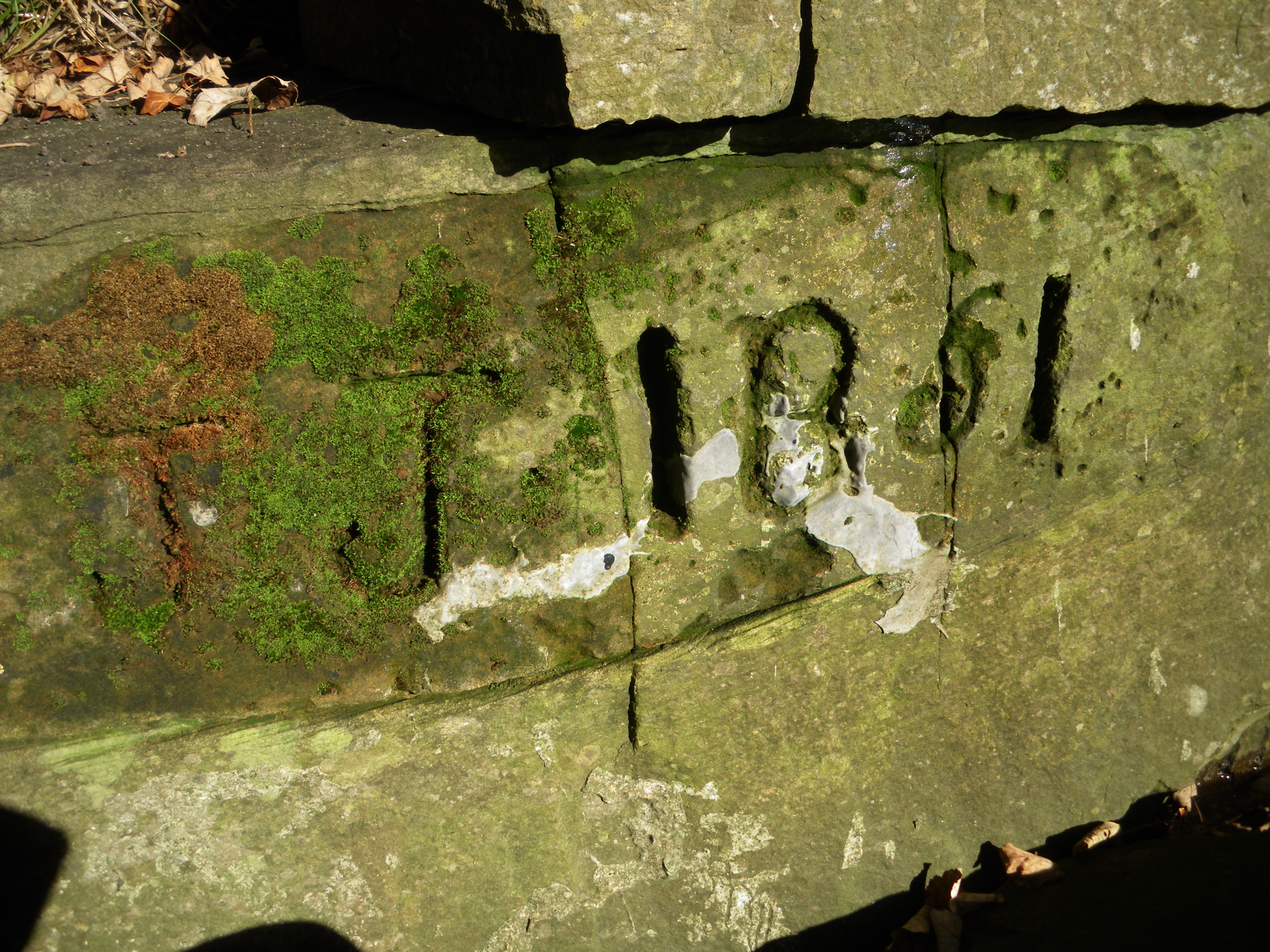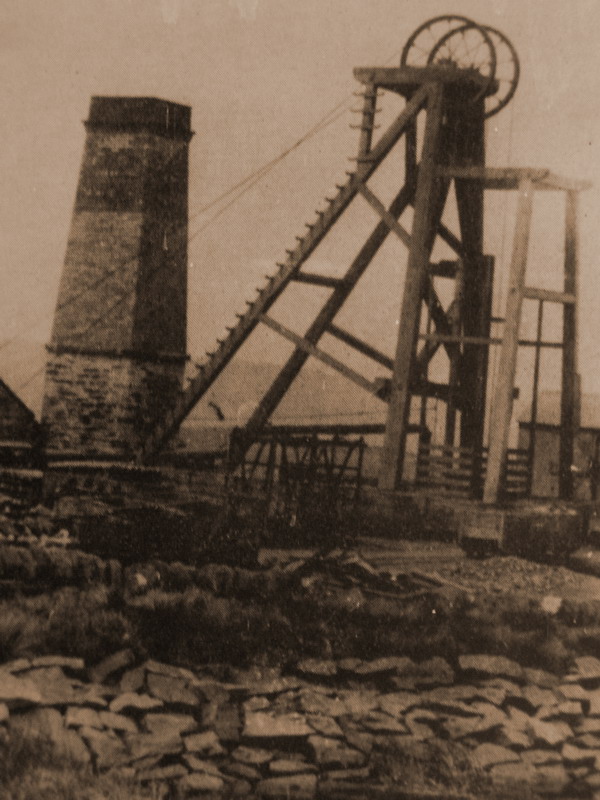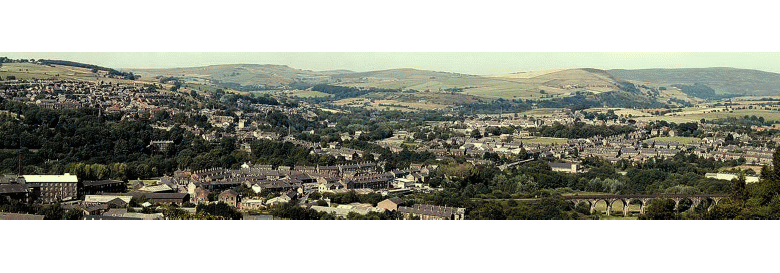Following removal of the deer from the royal forest and relaxation of the forest law in the seventeenth century, a division was made between crown and commoners of the commons and wastes. The building of farms together with new tracks and roads marked the beginning of a period of prosperity with much rebuilding of farms and halls, and the opening up of many coal mines. A large amount of coal was mined in the eighteenth century and with increased demand in the nineteenth century production continued into deeper mines. Many of these mines were in areas close to the centre of town.
The following extracts are taken from Derek Brumhead’s ‘The Coal Mines of New Mills’
‘The rocks in and around New Mills consist of alternations of sandstone and shale’s of the Lower Coal Measures, with several thin coal seams. Shale is the dominant rock often forming the roof of coal seams and varying in thickness up to scores of feet. Such shale is often labelled as ‘bind’ on mine sections and is a common constituent of spoil heaps adjacent to pits or tunnels. Sandstone are not consistent and vary markedly in thickness over short geographical distances. On mine sections they are labelled as ‘rock’. There are five named coal seams in the local succession, but the most commonly mined was the Yard Coal, so named from its average thickness. Less important was the Red Ash Coal; the others were Big Smut Coal, White Ash Coal and Ganister Coal seams. A fossil soil occurs beneath many coal seams and in some localities forms a grey or whitish clay deficient in lime, suitable for the manufacture of bricks and tiles. It was mined at Birch Vale and Furness Vale. Below the Yard Coal is Woodhead Rock, this is visible in the Torrs’.
Coal mining in the area had a very long history. Records from the early days are of course scarce, but was extensive many of the abandonment maps refer to ancient workings.
‘A licence given in1599 to Henry Needham of Thornsett to work coal in Middlecale restricted to him to six pits and contained a proviso for railings around the pits for the protection of cattle’
Mining in the area began on the top of high ground as the Yard seam was close to the ground surface and was reached by shallow pits.
‘It is estimated that an acre of coal contained 1510 tons for every foot thickness. At its maximum thickness, therefore, the Yard seam should yield theoretically something like 4,500 tons per acre. In practice the figure would have been much less since mining was done on the pillar and stall method, although pillars were sometimes recovered later. The account record book shows that 123,258 scores of coal were recovered in 46 years. If a score is one ton then this would represent 27 acres were the seam was one yard thick and was completely removed. This might explain why mining in the early and mid 19th century, when techniques were much further advanced took place on the lower slopes of the moors where the seams were deeper. Higher up much of the coal had gone.’
Records in the mid nineteenth Century are more detailed.
‘Beardmoor Colliery is worked by Joseph Hall, William and Thomas Drinkwater. About ten shafts are sunk only one is now at work, which raises from the 3 feet seam (Yard Mine Seam) daily from thirty to forty loads or about 5 tons, of which one fourth is best and three fourths of inferior quality. From twenty to thirty acres are yet to get, and from fifty to sixty acres more of the 3 foot coal might be got if the ground was drained to a level.
Ollersett or Burned Edge Colliery is worked by the same parties. About ten shafts are now at work on the 3 foot seam and from thirty to forty acres of coal are yet to get, but the ground requires drainage. The coal is of good quality, three quarters of the best and one quarter inferior.
Brigreve Edge or Broadhurst Edge Colliery is worked by Johnathon Jowatt as under tenant…. Seven shafts have been sunk in the newly enclosed land, five of them worked out and two are now in use. The west shaft is forty-four yards deep; the seam varies from fifteen to eighteen inches in thickness and produces about three loads and a half and about half a ton to a square yard. It is raised for 4d and sells for 9d. It burns to a red ash (hence Red Ash Mine). This seam will last for seven years at the present rate of working.
Lee or New Mills Colliery is worked by Mr Ralph Bower. Three shafts are sunk to a depth of from seventy to one hundred yards to the 3 feet seam of coal. Two of the shafts are nearly worked out and one only is at present in use. A level is driven but the drainage is rather difficult. The seam unfortunately deepens into the hill toward the north but, the roof being solid, nearly the whole of the coal is got, very little being left for supports. The cubic yard produces about six loads and a half or nearly one ton – it burns to a white ash.’
Demand for coal in the local area grew in line with local industry but a certain amount had always been sold. John Wilkin, a mineral agent noted ‘ This district is very favourable for collieries; a canal runs with half a mile of the pit at Whittle, and at a distance of little more than a mile from any of the pitS. The great dependence is on the numerous manufactories which have of late years sprung up in the neighbourhood called New Mills – with every prospect of further increase.’
 The coming of the railways in the latter half of the 19th century largely spelt the end for local coal production. Superior quality coal was easily imported into the area from Yorkshire and Lancashire coalfields. Local mines were unable to compete and began to close. The largest local mine Beard and Bugsworth colliery closed in1903. The coming of the railways in the latter half of the 19th century largely spelt the end for local coal production. Superior quality coal was easily imported into the area from Yorkshire and Lancashire coalfields. Local mines were unable to compete and began to close. The largest local mine Beard and Bugsworth colliery closed in1903.
‘In the autumn of 1902, Hall Bros. decided to close Gowhole and Lady Pit and the same gentleman who addressed them at Barn Coal Pit in 1887 addressed them at Lady Pit head. Mr Hall said that owing to the coal seams running out and the fact that the opening of Cowburn Tunnel in 1884 linking the Midland Railway and the Yorkshire coalfields, there was a large quantity of slack coal coming into the district. This coal was superior to anything they could produce and cost little more. He thought that the time was coming when there would be little demand for their class of coal. That was the sole reason he had decided to close the pits.
Conditions in the Mines
Mining was one of the most arduous of occupations. The Yard seam was less than a meter wide so there were few places within a mine that a man could kneel upright. Miners known as stallmen picked out the coal in a stall leaving pillars of coal between to hold up the roof. They wore little clothing and commonly worked on their sides picking out the seam and pushing the coal back to be collected by trammers whose job was to push trucks of coal out to the head of the mine. Often the mine was partially flooded and a miner would lie or push his truck in water all day. Candles and later lamps were the only form of lighting. The mock up of a mine in New Mills Heritage Centre gives a fairly accurate representation of local mining conditions, except of course, for the wet and stifling conditions the men endured.
Accidents
Mining was not only an arduous occupation, but also a particularly dangerous one. Injuries and incapacitating disabilities must have been a fact of life. Fatal accidents also occurred (accidents before 1855 are hard to trace)
12-5-1837 Inquest at New Mills - An inquest was held at the Crown Inn, New Mills, before Mr Manders, coroner, on the body of a collier, in the employ of Mr Bower of that place, who was accidentally killed by a fall of some substance from the side of the pit, which he was descending to his work. Another inquest was also held on the body of an old man, nearly 80 years of age, a collier also in the employ of Messers. Bower, who was found near his team at brook bottom , quite dead, on Saturday morning. The old man had been in the employ of Messers Bower for upward of 50 years.
‘1855 Ollersett Colliery. William Cooper. Suffocated by choke damp.
1879 Aspenshaw. Joseph Bennett, 25 stallman. Killed by fall of roof.
1880 Beard and Bugsworth. Joseph Hill, 19, trammer. Roadway too small and the tub caught a prop and knocked it out causing the roof to fall on the deceased.
1882 Thornsett Hey. Samuel Pott, 50. Killed unramming a missed shot that exploded.
1883 Aspenshaw. John Thomas Florey. Stallman. Killed by fall of roof.
1884 Aspenshaw. John Bramhall. 50 Stallman. Killed by fall of roof.
1888 Burn’d Edge. Joseph Bowden, 28. Labourer. Assisting taking down arch of the top of an old pit. Slipped and fell down the shaft. Killed
1891 Birch Vale. Benjamin Howard, 39. Deputy. Killed by fall of roof.
1906 Birch Vale. William Barker, 65. Header. Fall of roof. Working in the end of a narrow heading killed when a large stone fell from the roof.’
An Old Collier 1917
An insight into the conditions in the mines of the district can be made from the inquest into the sad death of a collier, Joseph Marshall at Bank End Colliery, between New Mills and Furness Vale. On the 29th August he had been engaged with John Bennett removing props.
Mr John Bennett stated he was an experienced miner, having worked in collieries all his life. He had worked at this pit a year and nine months and the deceased was there before him. On the Wednesday of the accident they were working in the second level of the mine, a part that was finished with. There were three props,which supported a wooden bar across the roof. Bennett loosened the prop, and told Marshall to knock the bar off. He told him to hit it, and Bennett was close to him at the time. Marshall knocked with his hammer and it came out. Part of the roof came with it. The deceased was running away when he slipped on some dirt and fell. The earth fell upon him and pinned him down. Bennett got hold of him by the shoulder to pull him out, when the deceased said ‘Hold on John. Don’t pull. Get a shovel and pull the dirt off my legs.’ Bennett did so, and whilst he was doing it the roof fell in a second time. Marshall was covered with the exception of his head. He called out for Bennett to loosen him. He pulled the dirt off his head, so that he might breathe, but another lot came down on the top of him and buried him. Bennett scratched the dirt off his face as he thought that he might not be dead. He said, ‘is that all right Joe?’ but he never answered. Bennett thought that he has unconscious then, but now he thought that he was probably dead. He got the assistance of John Favell and another man to help him to get the deceased out. He was dead when got out.
In answer to the inspector, Bennett said the bar they were drawing out was in the roadway in a part of the mine that was finished with. Mr Lever, the deputy, ordered him to do the work, and it was left to his own judgement as to how he did it. Lever told him to be very careful and he was careful. He took the greatest precautions. There was an appliance called a Silvester for use in drawing the timber out. Attached to this was a contrivance or chain which they might use. It was close to them when the accident happened, and they had used it on a previous occasion. They did not use it on this occasion, because they thought it was not required. Bennett examined the roof carefully and came to the conclusion that it would be well to put an additional prop in. as a matter of fact there was a number of props to put in the roof to hold it up. They were not more than fifteen inches from where the roof fell in. he never expected the roof to fall. When Marshall had knocked out the prop he had given it three knocks with his hammer before it fell. He could have got away as the witness had, but for slipping. The fall of the roof had knocked three bars with it. The bars were not a foot apart, and were quite sound. Not one of them was broken. He attributed the cause of the sudden fall to two slips in the roof one either side of the roadway meeting each other. It was impossible to detect these slips before the fall. If he had to do this work again he certainly would take the precaution of using the contrivance mentioned. It was thought that Marshall had suffocated beneath the second fall of earth. Both miners were considered experienced men and it was to their discretion whether the Silvester was used or not. A verdict of misadventure was returned.
Mr Marshall was 62 years old and resided at Bate Mill Row. In his earlier days he was a collier in the Thornsett district. But when the pits there were closed he followed various other trades and at one time dealt largely in scrap metals. At one time he was closely connected with the Rowarth Sunday School, but latterly with the Congregational Church. He was one of the best known men in the district, and highly respected. The sad death of the old collier in a mine caused a painful sensation in the district. He left a widow and family. Several sons are in the army and one has been wounded. Mr Marshall returned to his old trade as a collier about two years ago.
Several years ago, whilst work was proceeding at the Bank End Quarry, a seam of coal was struck and it was found to be worth working as engine coal. It has been found extremely valuable to local works, especially during the war, when it has been so difficult to get coal by rail. Coal was got in the immediate vicinity many years ago, and Mr Williamson is working an old seam in addition to the new one at the Ely Bank Pit, where the fatality occurred.
List of mines and pits
Between 1811 and the last closure in 1946 a total of 48 collieries can be recognised. Below are some names of New Mills Collieries mines and pits.
Little mine pit
Brooms pit
Ladder pit
Winding pit
Berry Edge pit
Lady pit
Chain pit
Deans Piece pit
Furnace pit
Blind pit
Brocklehurst pit
Old Dolly pit
Tommy Brow
Aspenshaw Colliery – Mountain mine
Aspenshaw Coal Company
Birch Vale Colliery
Thornsett Hey – Cave Adullam
New Pit – Pingot Colliery
Weathercotes Colliery
Lark Hill Colliery
Marsh Lane Colliery
Red Ash Mine
Burn’d Edge Colliery
Burn’d Edge Colliery No 2 or New Pit
Burn’d Edge Colliery No3
Burn’d Edge Colliery No4
Arden Colliery
Ollersett Hall or Brocklehurst Colliery
Lower Edge Colliery
High Lee Colliery
Hague Colliery
Birch Vale Fireclay Colliery
Butterbank Colliery
Park Mine
Pingot Clough Mine
Noon Sun Mine
Mellor or Broadhurst Edge Mine
Eaves Knoll Mine
Bank End No1 and No 2
Bullbower Mine
Little Mine
Redmoor Lane Mine
Grub mine
Shaw Marsh Mine
Ardern Mine.

Advert from Stockport Advertiser 1st January 1836
To be let, the ASPINSHAW YARD MINE, affording excellent engine coals, and house fire and Smithy coals; and all other mines lying under the estate of G.W Newton Esq. in Beard and Ollersett, called the FIRST or LITTLE MINE, 18inches thick, the SECOND LITTLE MINE, 20 inches thick; and the BURND EDGE MINE, 3 feet 6 inches. Only the last named is at present being worked. The mines are in the hands of the proprietor. The railways and waggon roads are all complete.
 | 








 The coming of the railways in the latter half of the 19th century largely spelt the end for local coal production. Superior quality coal was easily imported into the area from Yorkshire and Lancashire coalfields. Local mines were unable to compete and began to close. The largest local mine Beard and Bugsworth colliery closed in1903.
The coming of the railways in the latter half of the 19th century largely spelt the end for local coal production. Superior quality coal was easily imported into the area from Yorkshire and Lancashire coalfields. Local mines were unable to compete and began to close. The largest local mine Beard and Bugsworth colliery closed in1903.